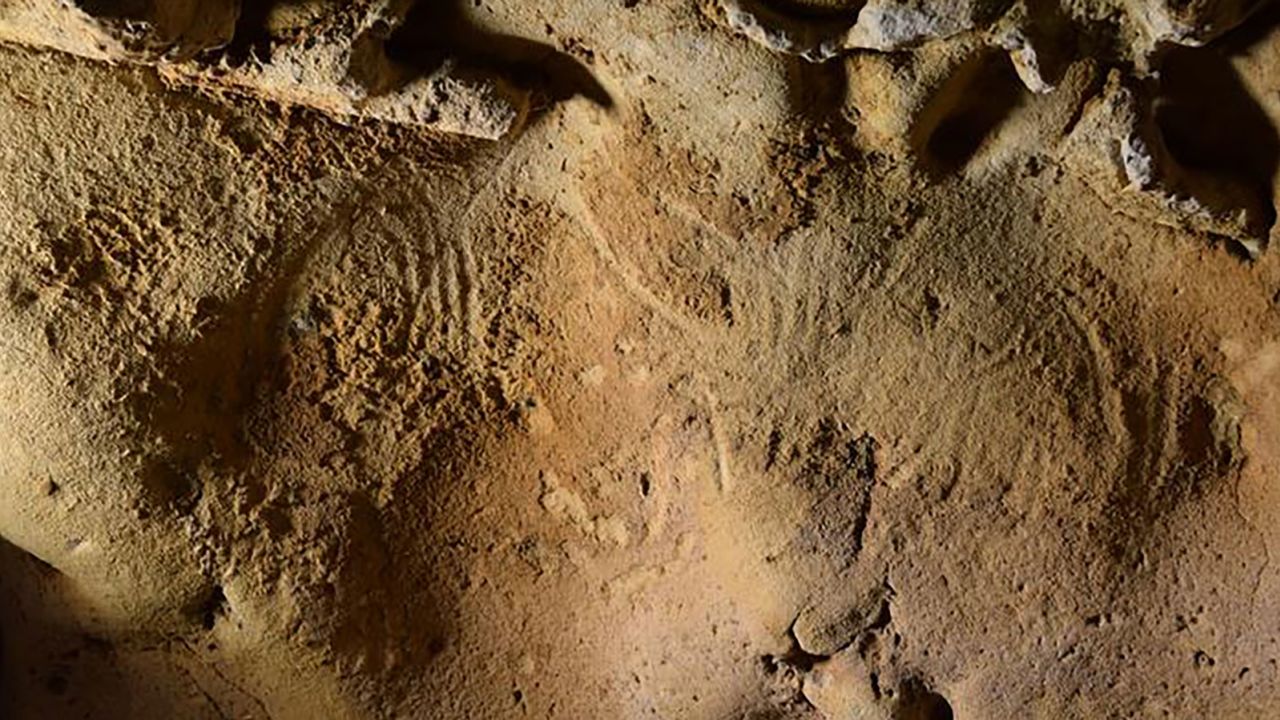Editor’s note: Sign up for CNN’s Wonder Theory science newsletter. Explore the universe with news on fascinating discoveries, scientific advancements and more.
Made by dragging fingers across relatively soft rock, lines, swirls and dots on the walls of a cave in France are the oldest known engravings by Neanderthals, according to a new analysis of the ancient marks.
A team of researchers, led by Jean-Claude Marquet of the University of Tours in France, believe the markings “demonstrate a deliberate creative process,” the study published in the journal PLOS ONE on Wednesday noted.
“The traces preserved in the cave of La Roche-Cotard make a new and very important contribution to our knowledge of Neanderthal behaviour,” the study concluded.
The finding adds to a growing body of evidence that Neanderthals — who have been characterized as dim-witted cave dwellers — were creative beings and more complex than the stereotype suggests.
Neanderthals’ ‘deliberate composition’
To understand how the markings were made and whether they were intentional, the researchers made detailed 3D models of the engravings from photographs of the Loire Valley’s La Roche-Cotard cave using a process known as photogrammetry.
At the same time, the team conducted experiments in a nearby cavity dug out from the same type of rock 300 to 400 years ago. Researchers created similar marks on the wall — using bone, wood, antlers, flint and metal points, in addition to their fingers — and made similar 3D models from those, too.

They used the information and measurements they gathered to distinguish the different types of marks visible on the Loire Valley cave walls and determine whether they were made by animals or humans and if they were ancient or made since 1912, when the cave was first excavated.
Based on the shape, spacing and arrangement of these engravings, the team concluded that markings in eight panels in La Roche-Cotard cave were intentional shapes and patterns created by human hands.
Most of the patterns, known as finger flutings, were made by fingers laid flat, with a few made by the edge of a finger. Six of the panels were at an average height of 1.5 to 1.7 meters (4.9 to 5.6 feet) above the floor.
The finger flutings would have been much deeper and less precise if they were being used to collect rock powder for some purpose, the researchers said.
Instead, they believed the eight panels formed “a seemingly organised set on the longest and most regular wall away from the cave entrance” and that the layout of these graphic, nonfigurative designs on the wall of the cave was a “deliberate composition, and is the result of a thought process giving rise to conscious design and intent,” according to the study.
Engravings sealed in cave
Researchers were not able to date the engravings directly, but — by using optically stimulated luminescence dating that measures when mineral in sediment was last exposed to sunlight — they estimated the marks were made at least 57,000 years ago when the cave became sealed off.
This date, combined with the fact that all stone tools within the cave are Mousterian, a style associated with Neanderthals, is strong evidence that these engravings are the work of the extinct Stone Age hominin, according to the study.
Neanderthals are considered separate from Homo sapiens, our species, but they are from a close branch of the human family tree. The two groups overlapped in Europe for thousands of years, intermingled and had babies before Neanderthals became extinct. Most people alive today have traces of Neanderthal DNA.
The earliest widely accepted evidence of Homo sapiens in Europe dates from 45,500 years ago in Bulgaria, the study authors noted, although more recent discoveries suggest that humans might have been in France even earlier.
Whether Neanderthals had an artistic sensibility has long been debated. At some cave sites in Spain, there’s evidence — albeit contentious — that Neanderthals created abstract motifs and hand stencils.
Archaeologists also believe Neanderthals wore ornaments made from shells, bird talons and carved deer bone.






